NExTWORK
A Hybrid Platform for Youth Employment & Engagement
- Client: ROCKWOOL Foundation / Danish municipalities
- Year: 2017–2022
- Role: Project Manager & Designer
- Tags: Service Design, Youth Employment, Dashboard, Co-creation, Social Impact
Project Overview
NExTWORKis a service and digital platform designed to support young people on welfare by helping them build professional relationships, access internships, and re-engage with education or employment. Piloted in Roskilde in 2015, the initiative has since expanded to five Danish municipalities, helping over300 youth annually.
Unlike traditional employment services, NExTWORK focuses onnetwork-building: weekly peer sessions, curated company matchups, and lightweight digital monitoring replace isolated CV workshops and impersonal job listings.
Motivation & Opportunity
The ROCKWOOL Foundation’s data revealed a systemic issue: thousands of young adults in Denmark remained stuck in passive welfare, costing DKK 12–15 billion annually. The problem wasn’t just unemployment disengagement and lack of relevant social or professional networks.
We aimed todesign a trust, visibility, and forward motionsystem blending facilitated group formats, soft-skill development, and data-informed support for youth and employers.
My Role & Collaboration
As Project Manager & Designer, I was responsible for:
Leading co-creation workshops with youth, caseworkers, and SMEs
Mapping service blueprints and designing interaction flows
Prototyping the digital platform: dashboards, forms, metrics, and visualizations
Translating analog fieldwork into scalable digital components
During the initial rollout, I worked directly with municipal caseworkers, coaches, and over 200 youth and SME participants, adjusting the product based on real-world friction.
Design & Product Thinking
The program revolves aroundfour interlocking components:
Youth-network groups weekly peer-led sessions with a coach
Company-network meetups monthly events to explore internships
The NExTWORK Game an onboarding activity to surface motivation and values
Digital dashboard a live system for tracking engagement and outcomes
Key interface components include:
Adata dashboardwith personal and group-level stats
Feedback forms for personal well-being and work experience
Editable databases for caseworkers and SMEs
Visual progress tracking (“movement donuts”) for soft skills like resilience
Detailed company profiles with images and expectations
Design principles:trust before automation,low-friction tracking, andvisibility across actors(youth, coaches, SMEs, caseworkers).
Constraints & Pivots
We began with the assumption that a digital matching platform would suffice. In practice, we learned thatyouth needed relationship-building first, andcompanies required active coordination.
Key pivots:
Shifted from digital-only to ablended modelof in-person facilitation + digital support
Introduced thecompany coordinator roleto manage SME engagement and logistics
Addedfield notes modulesafter seeing coaches adapt informal tracking methods
Tech-wise, we used alightweight CMS-backed dashboard, ensuring compatibility with municipal systems and field environments.
Design Principles
Mobile-first.
Offline-firstwith SQLite storage and delayed sync.
Minimal data entryto reduce friction.
Visual languageover heavy text (icons, progress bars, cards)
Research & Testing
Over three weeks in Roskilde, we rancontextual interviews, site visits, and participatory design workshopswith youth, SMEs, and job center staff. Weekly feedback from youth-network groups and monthly SME meetings allowed us toiteratively refineboth the service model and dashboard UI.
Insights included:
Youth responded better topeer energythan solo prompts
SMEs valuedsocial chemistryover rigid skill-matching
Coaches wanted flexible tools for field-based updates and feedback
Final Outcome & Impact
The final product was alive service ecosystem:
Peer support + coaching
Facilitated SME matchmaking
A web dashboard tracking movement toward employment or education
Over 300 youths participate across municipalities per year, with a reported75% transition rateinto jobs, education, or training. The project has become one of CIID’s longest-running deployments and a model for service-design-led public innovation.
Reflection
What I'm proud of:
Turningnetwork theory into a working public-sector platform
Helping vulnerable youthfeel seen, heard, and connected
Designing a product that respectedboth human context and system needs
What I’d do differently:
Build the digital platformin parallelwith early fieldwork, not as a follow-up
Plan forscalable analyticsearlier to support longitudinal evaluation
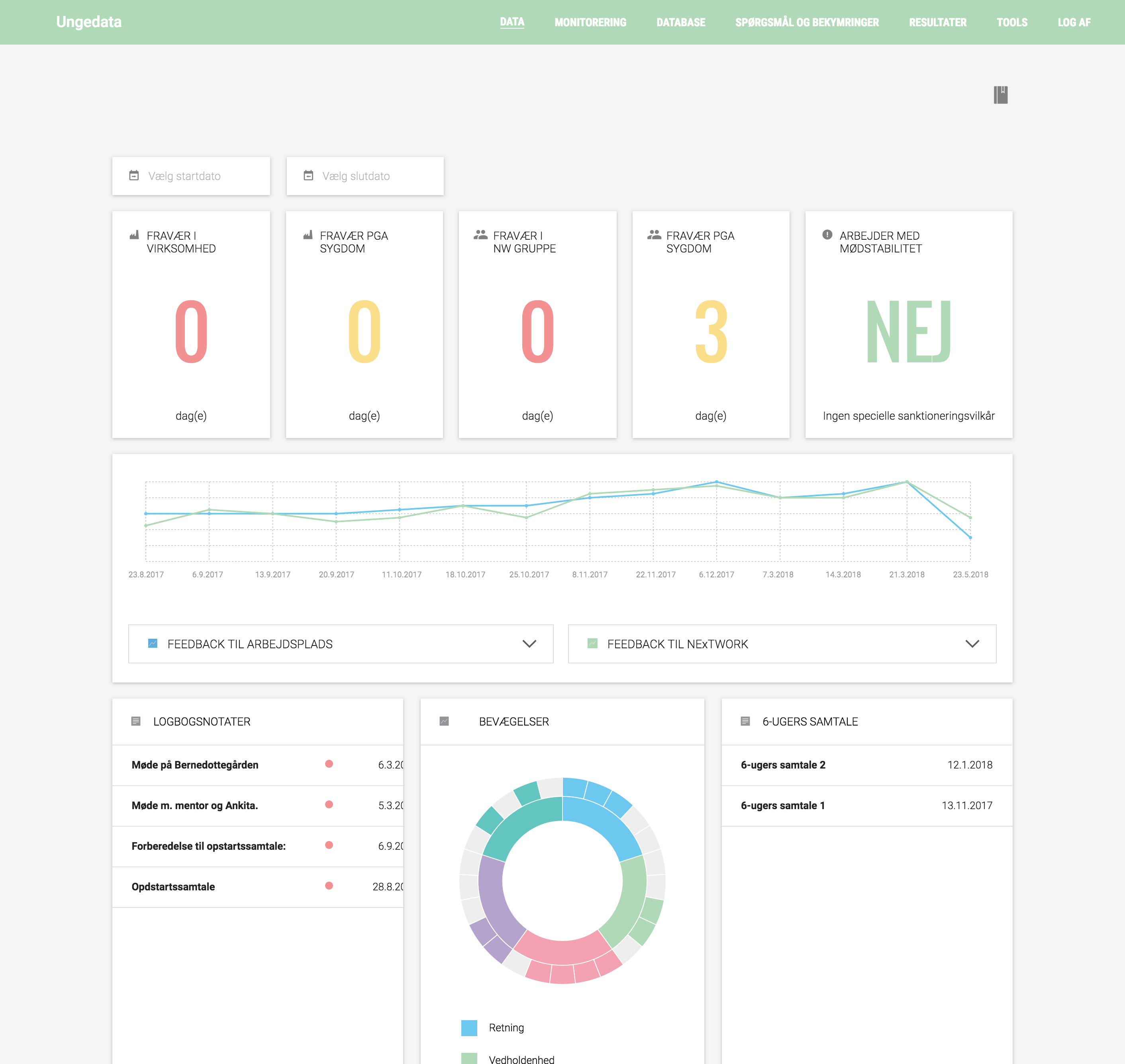
nex_01
“Ungedata” dashboard (DATA tab) showing youth absence metrics cards (total days absent in company, due to illness, in network group, network-illness), a “mødestabilitet” flag, a time-series line chart of feedback over time, logbook notes, circular “Bevægelser” chart, and a 6-week conversation list.
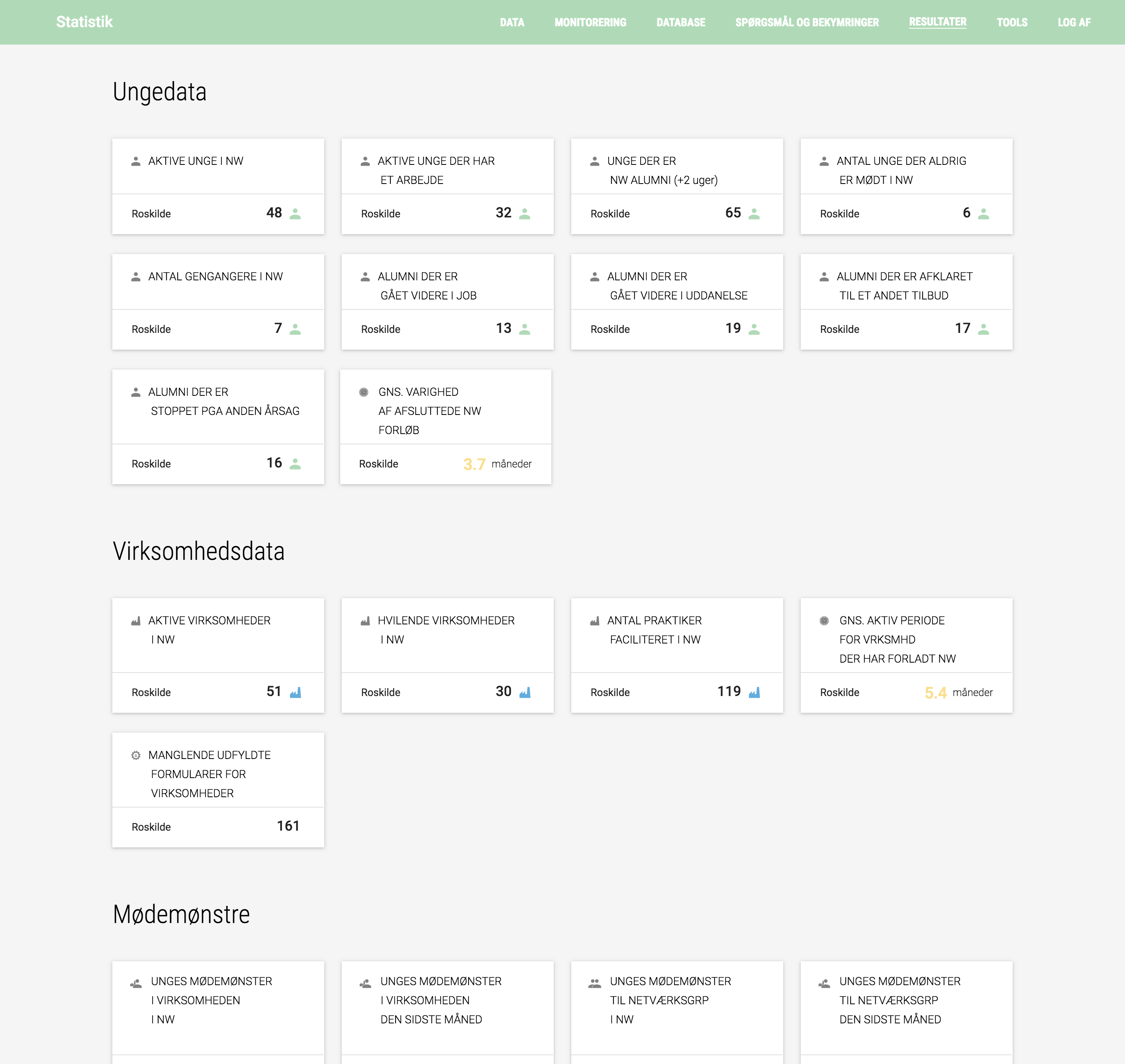
nex_02
“Statistik” results screen showing a grid of metric cards under “Ungedata” (active youth in NW, those employed, alumni >2 weeks, never met in NW, repeaters, alumni moved on to jobs/education/other offerings, average program duration) and “Virksomhedsdata” (active/inactive companies, facilitated internships, average active period, missing forms).
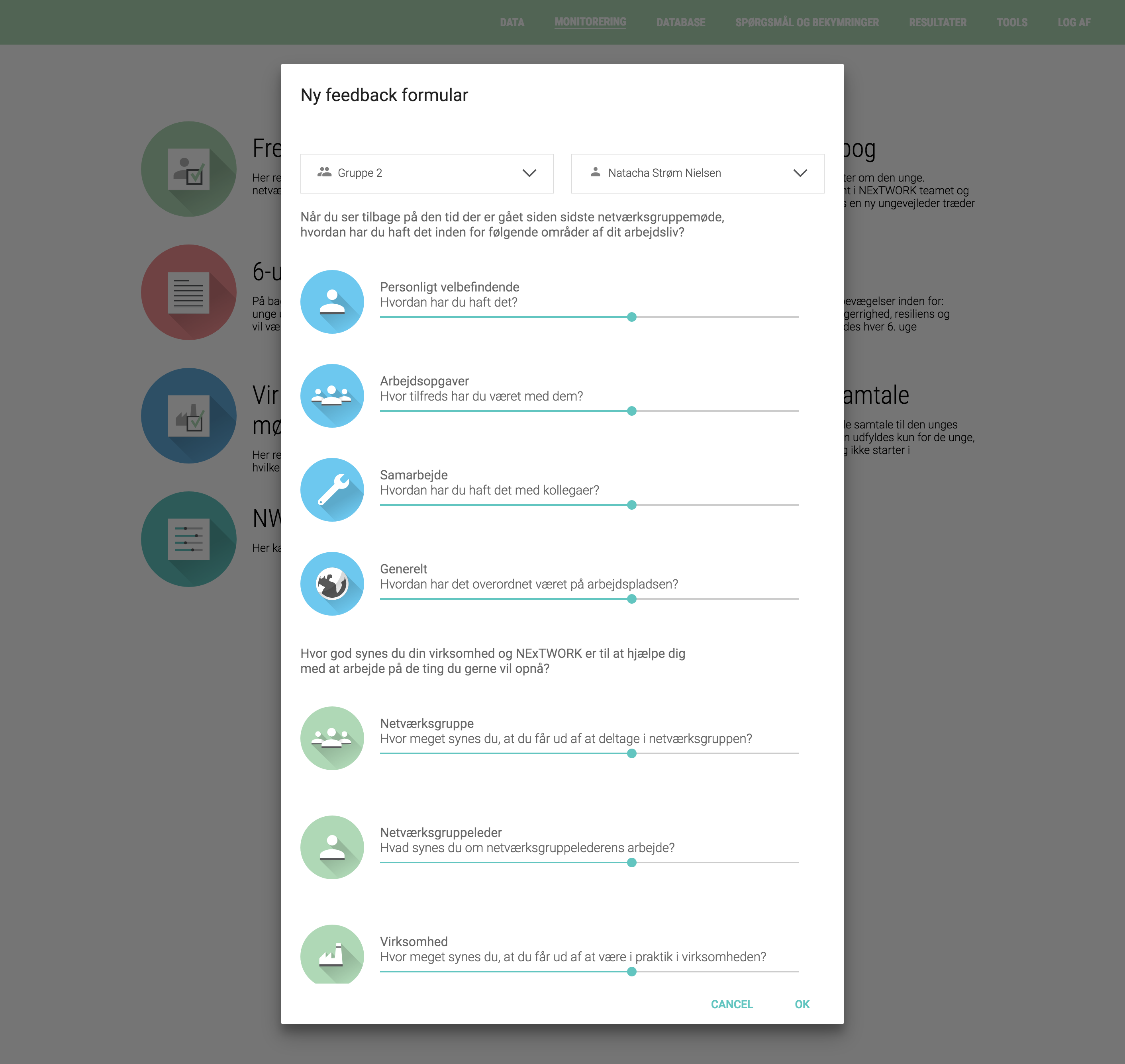
nex_03
“Ny feedback formular” modal overlay (TOOLS tab) with dropdowns for group and coach, followed by sliders for “Personligt velbefindende,” “Arbejdsopgaver,” “Samarbejde,” “Generelt,” and more questions about network-group and company experience.
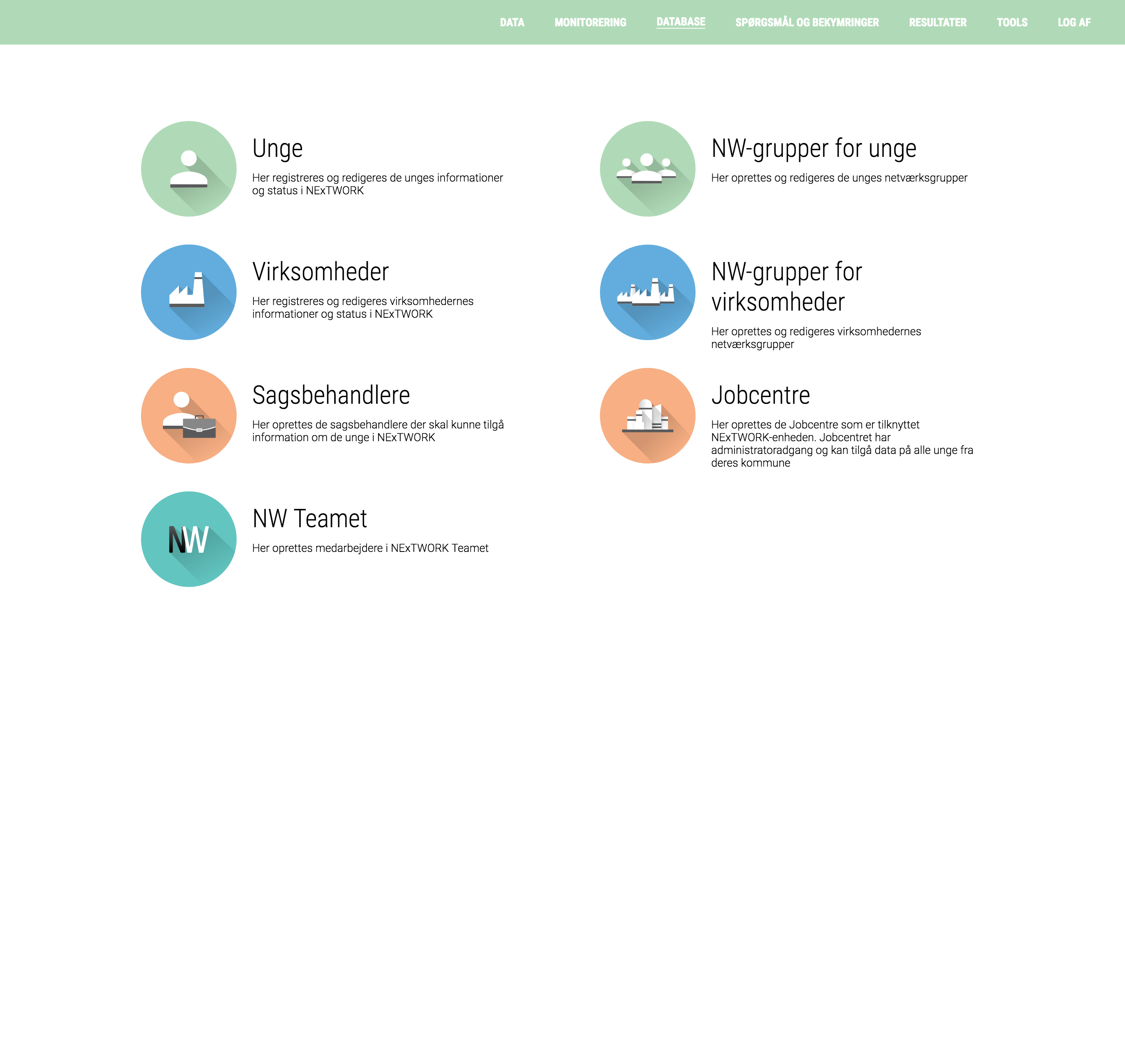
nex_04
“Database” screen listing editable categories: Unge (youth), Virksomheder (companies), Sagsbehandlere (caseworkers), NW Teamet, NW-grupper for unge, NW-grupper for virksomheder, and Jobcentre, each with icon and explanatory text.
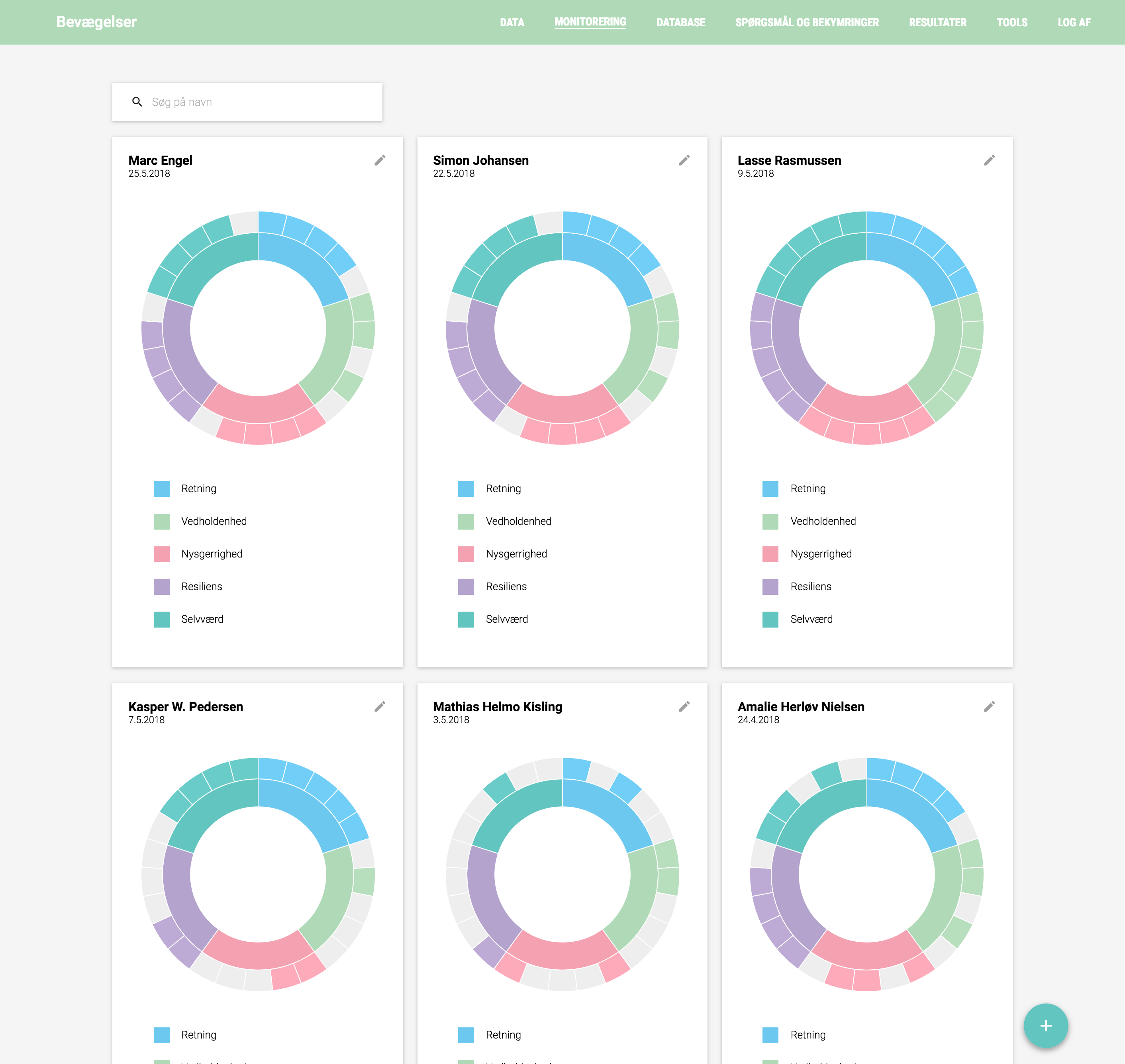
nex_05
“Bevægelser” monitoring screen showing a search bar and a grid of individual “movement” donuts for participants (Marc Engel, Simon Johansen, Lasse Rasmussen, etc.), each donut layer encoding “Retning,” “Vedholdenhed,” “Nysgerrighed,” “Resiliens,” and “Selvværd.”
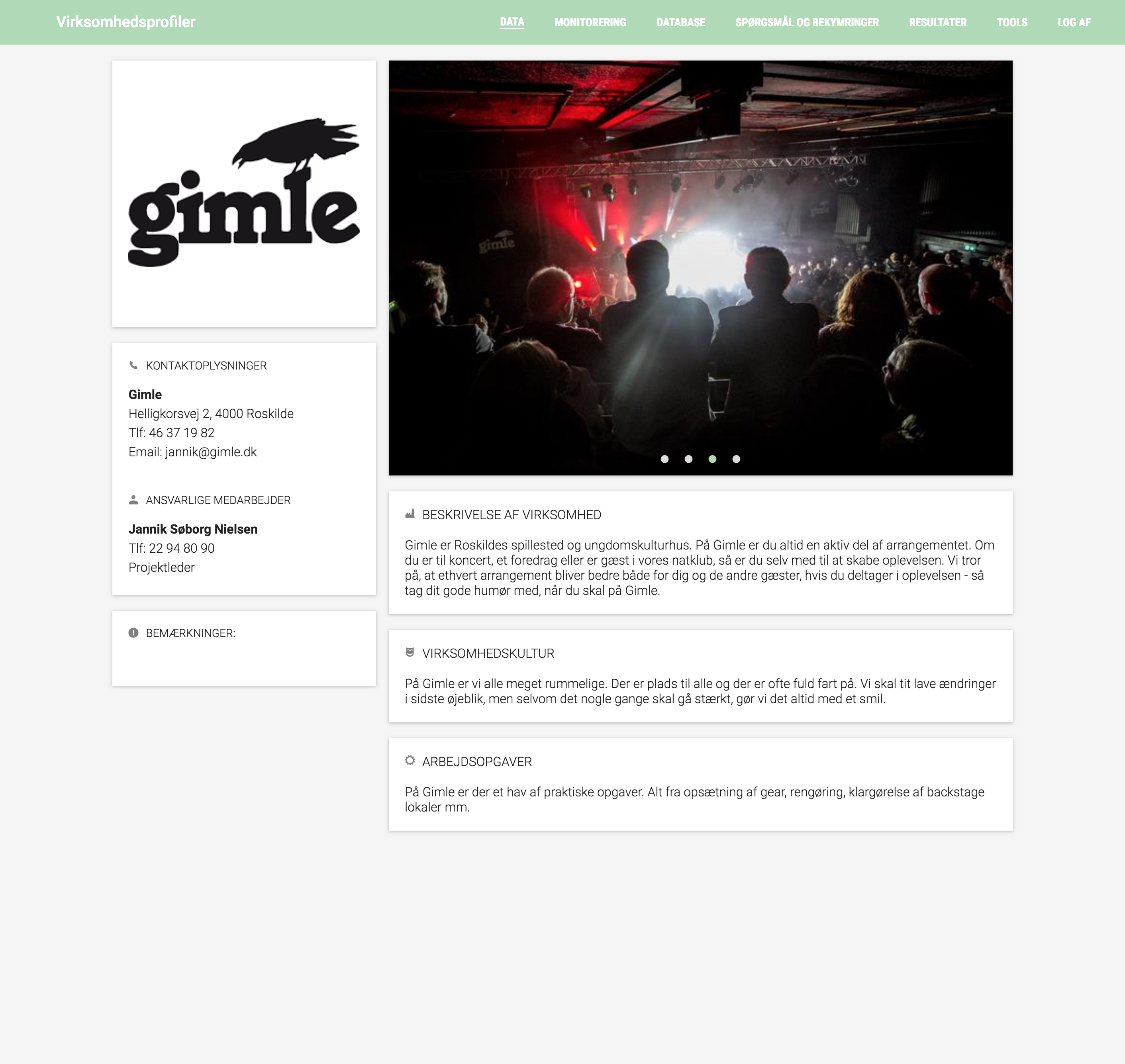
nex_06
“Virksomhedsprofiler” details view (RESULTATER tab) for a partner company “Gimle,” showing the company logo, contact information, responsible staff card, remarks, a large image carousel of the venue, and panels for company description, culture, and tasks.
